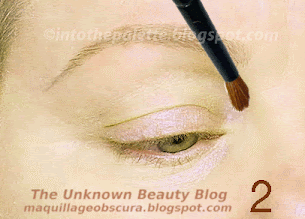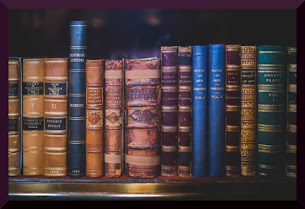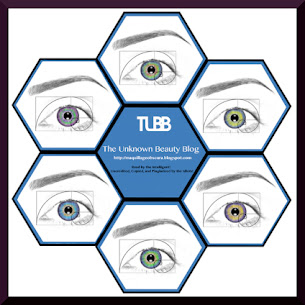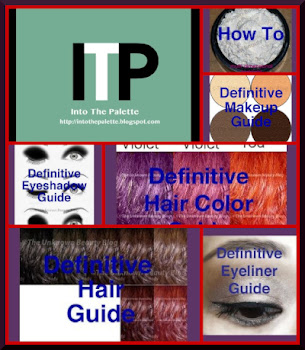Someone suggested a post on customizing foundations, so I figured I would do it. I do customize many of my foundations. This may be the reason why I have so many. (Offshoot thought: Maybe, I will do a post on my favorite foundations in the future.)
Foundations are usually a mix of white, red, yellow, brown, and some other secret mix of colors. Sometimes, those colors might not be enough or the texture isn't quite right which is why I customize for two reasons: texture and color.
Check out: The Skin Tone Color Theory
In the following pictures I used Joe Blasco and RCMA. You can use any type of foundation. I just use these two because they are like the restaurant quality butter, well okay no high fat content but high pigment content of 55%. Many of you may have bought these brands and thought they were just too thick. Just thin them out, the stuff isn't going to explode and no one is going to put a hex on you for doing it. The picture shows the various colors I use for my skintone. You can see that they range from pink, beige, to olive. These are the ones that work for my depth of skintone and the different tones work to neutralize, match, or enhance it.
Thinning Out or Diluting Foundation
Why would I want to thin out or dilute my foundation? Sometimes thinning it out makes it easier to work with; application can be faster. There are several ways to do this: another liquid foundation, moisturizer, jojoba oil, grapeseed oil, or even aloe vera gel. Here, I take a dollop of RCMA which tends to be a bit dry for some.
Top row-Taking my stainless steel spatula and plate I just mix a liquid foundation (this one is Philosophy's Superbeautiful foundation in beige) and just mash the two together until a smooth consistency. The pigment content is lowered just a bit, but not as much because both contain their own pigments.
Bottom row-Now, let's say your foundation matches you perfectly but you want more of a tinted moisturizer. I used a mixture of grapeseed oil and glycerin. (Glycerin alone is fine also, it will give the foundation a bit of luster and some extra moisture.) I can add as little or as much as I want, enough to get the preferred consistency. I am not adding any pigments, therefore the pigment content can be lowered for less coverage.
Color Correction
Sometimes, you find that your foundation is the perfect texture, consistency, and color. Then something happens, your hormones start to rage; the weather changes; the color just looks off that one day, or certain parts of your face are a slightly differently color. The last one is very common for many. You may find that your forehead is more neutral while the cheek area is a bit warmer than the rest of your face. You don't have to buy two foundations, just tweak the color a bit by adding some color additive.
What are color additives? They are concentrated pigments that add color to change the base of the foundation just a bit. RCMA and Joe Blasco sell cream colors that can be mixed with foundation but these can be hard to find. But never fear, my favorite are OCC (Obsessive Compulsive Cosmetics) Lip Tars! (OCC also sells mixing bases and colour correctors for their airbrush foundations, but I prefer the tars.) These are easy to work with and are concentrated in color. Just remember a little goes a long way. I use a variety of colors as you can see.
- Feathered (white)-to lighten
- Conquest (ivory beige)-to lighten
- Petty Beige (nude brown)-to add a touch of brown
- Uber (yellow brown)-to add some warmth
- Fondue (dark brown)-to darken and add depth
- Hush (flesh pink)-to lighten and/or change the base tone
- Katricia (lavender)-to counteract warmth
- NFSW (red)-to add some ruddiness
- Traffic (yellow)-to add some warmth or to counteract redness
- RX (blue)-add some coolness but has to be used with caution (better to skip this one if you don't know what you are doing.)
- Botanical (green)-to add some olive tones or to counteract redness
- Tarred (black)-to deepen (should be used very sparingly)
Here, I chose Joe Blasco Ultrabase in Olive which has slight pink base to it and made for pale skin; then I chose Warm Olive 2 which is very warm and a medium toned.
Let's say that you have a pink to beige forehead but you find that you are slightly warmer in the cheek area.
Top row-Just take the foundation (olive) and mix it with Traffic (yellow) lip tar. If you find it too yellow, just add more foundation. This can also neutralize some redness on the face so don't despair if you have a foundation that is too pink.
Center row-Maybe, you have a slight tan and find that the same foundation is too light. Just add some browns to it to deepen. I added three types: Petty Beige, Uber, and Fondue. Why? Everyone has several types of brown in their skin and I find that adding two or three types of browns makes the foundation look more real in tone.
Bottom row-Or maybe, your foundation is just a tad dark. Since this foundation is on the pale side, I chose white to lighten it. If the foundation were dark toned one like a deep brown, I would have chosen the Conquest to lighten to avoid any ashiness.
Warm Olive 2 is a warm based foundation.
Top row maybe you want it to be more beige; this is where I mix it with just a touch of Hush to neutralize the warmth therefore turning it into a beige base.
Center row-Now, some of you may find that you have too much brown in your skin and applying that mauve or lavender neutralizer doesn't feel like enough. Or for many Asians including Southern Asians (Indians) may feel your skin is just too brown for some colors, some brown eyeshadows just don't look or feel right. Just mix some of your foundation with Katricia to counteract the brown in your skin. What you are actually doing is making a pink based neutralizer and pink counteracts brown. Using this like an eye base helps the brown shadows appear more true.
Bottom row-Maybe, you find that your foundation isn't olive toned enough. Take Botanical to make it slightly more olive.
The possibilities are endless when you have some form of the concentrated colors. You might wonder if you could do this with the colored primers. Actually, I find the colors are too muted and diluted. You want the concentrated form to actually change the foundation. Just remember it takes some experimentation but once you do have the right combination, customizing is easy and fun.

















